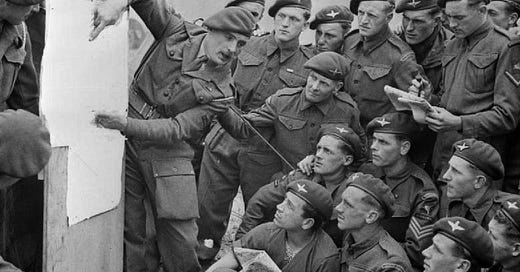Communicate and Connect; an essential leader competency.
How are we so bad at something we do all the time?
This is the fourth editorial in my series of personal reflections on leadership. Leadership and the Citizen should be read first to set the context.
It’s worth noting that my observations on leadership are based on what I believe to be important, and how I have tried to lead. I have failed, let myself and others down, and made the same mistakes more than once. With help from many leaders along the way, I did better and became a more capable leader, but never infallible. I try to do better everyday and I hope by sharing these thoughts, your path will be less rocky than mine.
In this editorial, I will address communication and connection as a leader. So much professional and personal conflict results from misunderstanding and poor communication. Communicating and connecting well is a hallmark of any leader.
“The single biggest problem in communication is the illusion that it has taken place.” - George Bernard Shaw
The military organizes people, directs teams, and achieves its outcomes through what is referred to as command and control, or C2. This is the heart of how instructions get passed from top to bottom and back up again. It is the way that the strategy of a four star general can be divided up and eventually become the action of a single person on the battlefield.
Image credit: Imperial War Museum collection no. 4700-37
Every organization has it’s own form of C2 that allows it to function. I see C2 as an important institutional tool, but as a leader, my most important C2 (let’s call it C&C to reduce confusion) is to be able to communicate and connect with the people on my team. Without this ability, not only is it difficult to get things done, but so many of the subtle details of leading people are missed. This can be the difference between an OK team and a great team. Or, an environment where people love coming to work versus one they can’t wait to leave. Let me share some of my personal experiences with C&C.
There were two moments in my military career where I considered leaving. The decisions I made were in no small part a result of how my bosses communicated and connected with me. At my first major career crossroads, I contacted my boss for advice before making a decision, which he gave without reservation. Not only did this leader follow up with me two days later, but he did so again a month later, and then again at six months. He wanted to check in on me to see how I was doing personally and professionally. For my second career crisis of faith, I followed a similar process, but this time no boss made an effort to communicate and connect. I was genuinely surprised on the lack of follow up, but this was probably just my hurt ego. Two similar situations, with different approaches from my superiors, and different outcomes. In the first example, I remained in the military for another decade and had a reinvigorated sense of dedication and service. In the second example, I left the military. To be fair, I cannot be certain that even a modicum of C&C would have kept me in uniform, but I can say with certainty, it’s absence added to the list of reasons to leave.
When I felt let down by my bosses, I made excuses for them. I justified this lack of C&C as “people are busy” or “they must sense my mind is made up”. But the reality is this was a failure of my superiors to do their jobs. In the end, after giving a year notice of my intent to leave the military, there was no genuine attempt to C&C, not even to simply support my transition. Needless to say, these vastly different approaches not only influenced my decision to remain in the military, but also how I viewed the social contract with my bosses and the entire institution. In my experience, communication is not simply about passing on information, but about building and reinforcing the trust needed for teams to perform and people to enjoy their work.
I have observed that most people tend to underestimate the importance of communication while simultaneously over-estimating their communication skills. Since we are constantly communicating, people probably believe they are effective communicators which I have found not to be the case. So, allow me share my version of C&C in the hopes that everyone can find something of use to be a more effective leader.
Let me start with what it means to communicate. As is well understood, this is the ability to pass your ideas, intents, or desires to another person or group through the use of verbal and non-verbal means. Beyond the obvious, here are some of the approaches I use and lessons I have learned.
Communication has no finish line. A friend and mentor once told me that communication never stops. Some listeners may understand the message immediately, while others will need to hear the message several more times, and perhaps reframed. The communication of an idea needs to be continuous and never assume the idea is widely understood or accepted.
Write more and talk less. OK, talking less is probably not helpful in communication, but the point I want to make is written communication is under used by leaders. Verbal communication is personal, engaging, and dynamic. There is no doubt this is an important form of communication to master. However, verbal messages can be interpreted differently by different listeners. Any important messages passed verbally should be supported by a written document. I have found words on a page are harder to misinterpret because there is no reliance on the memory of the listener. There is a good reason why we write down critical ideas like laws.
Strive for simplicity. Some of the best communication is the simplest. For me, the best communicators are the ones who can take complex ideas and distill them down so most people can understand them. This is not easy and it takes time to put together this type of refined communication. Even if you have the best idea, if you cannot communicate it in simple, digestible terms, no one will understand what you are trying to say.
Image credit - simonsinek.com
Get an editor. Always have a trusted agent ready to edit your communications before going public. These people will be able to critique your work with fresh eyes and make sure the flow and ideas are sound. It’s not about what you think you said, but what the listener hears or reads. Also, it’s always better to get feedback from those you trust; it makes the medicine go down better.
Be honest. In a world of social media, hyper-connectivity, and misinformation, people increasingly appreciate honesty. I believe people can intuitively sense honesty and dishonesty. There is nothing worse than rote communication with talking points and canned messages. Now, I’m a realist and understand you cannot publicly express your honest opinion on every issue and hope to keep your job; however, you can communicate honestly. This means using your own words which will elicit genuine emotion. Even unwelcome news communicated honestly can be appreciated by a listener.
Know yourself. Some people tell great jokes and can make any audience laugh. Other can spin a yarn that engages young and old alike. Unfortunately, most of us can do neither without a lot of practice. If you want to develop new strengths then put in the time, otherwise, avoid jokes and stories. If this is not your forte you will at best get a few groans and eye rolls, at worst, you could seriously offend people. Figure out who you are as a communicator and play to your strengths.
As you are in the process of communicating a message to your team, how do you know when communication has “taken place”? This is where you need to connect with listeners on an individual level. When you communicate to large teams, it will never be possible for every listener to understand the messages. They might understand the words, but the meaning or reasoning could be more illusive. Here are a few practices I use to connect with people.
Be present. One of my favourite tips for leaders is “presence indicates interest.” In being present, a leader has the opportunity to communicate in a more personal way. On many occasions, being present has allowed me to communicate a new policy or decision to an individual or small group far more effectively then in a larger forum.
Know your audience. It is often said you need to know who you are speaking to so you can tailor your message accordingly. The message may not change, but the way it’s delivered might vary based on the group. As a leader, you can only achieve this by spending time with the people on your team to get a sense of who they are and what’s important to them. Only once you have a sense of who your team is as individuals, are you able to shape your communications to resonate better with them.
Build advocacy. When you take the time to get to know your team, communicate important messages, and answer their questions, you will invariably build advocates who can communicate on your behalf. Some of your team will want to share your messages because they believe what you believe. Others will feel empowered to explain the ‘why’ to others who have not had the opportunity for a one-on-one session. Regardless of the reason, connecting with your team will help magnify the reach and understanding of your messages.
Image credit - Joint Task Force-Ukraine
There is actually a third C I use when it comes to communicating - consistency. Similar to the point that communication never stops, leaders need to be consistent in their C&C. It needs to become habitual. Only through consistent repetition can a leader build trust that can truly make a difference. Getting out of your office a couple of times a year will have no impact on your ability to connect and communicate. Being an effective communicator and connector will be an investment of your time, but it will yield an amazing return if you are committed and consistent.
Almost all of the conflict, friction, and discontent I have witnessed as a leader has resulted from poor communications. Many of our modern communication tools are wonderful, but they do not relieve a leader of their responsibility to communicate and connect with the individuals on their team. Leaders need to make an investment of time to not only craft thoughtful communication products, but connect with people to explain their messages. If a leader does this consistently, the team will not only become more effective, but happier and more supportive of the organization’s goals.











Thank you so much for this piece of wisdom. I have led teams small and larger and can definitely say that I keep realising how large my lack is, the older I get. This piece not only made me better but made me want to practice better. Thanks!